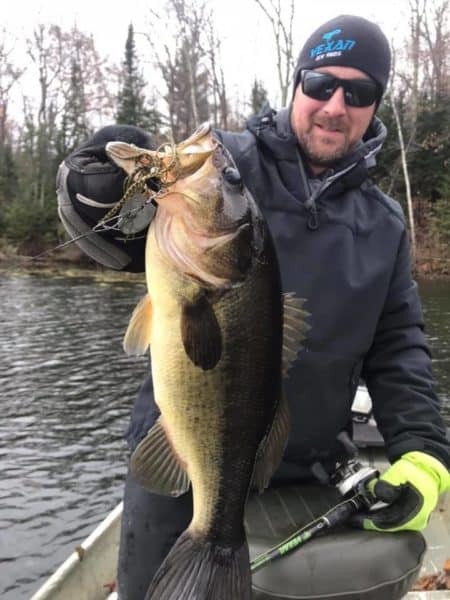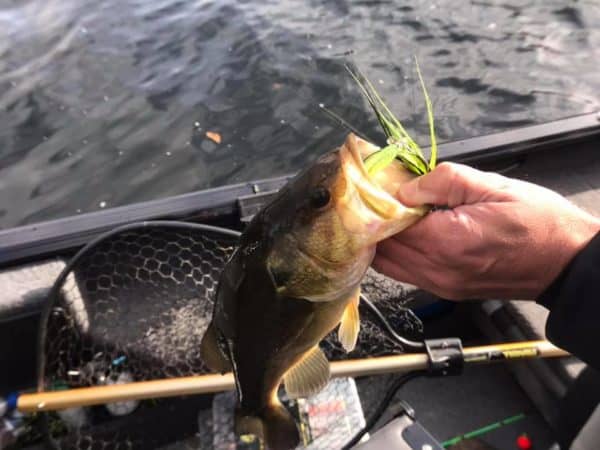Early Spring Bass
Mar 25th, 2022 by sworrall
Modified Mar 25th, 2022 at 2:13 PM

As the ice melts and seasons change across the upper Midwest, many anglers get ready to hit the water in pursuit of either largemouth or smallmouth bass. Tough fighters, readily available and reasonably easy to locate and catch, bass have become the most popular gamefish species in freshwater. Many states now have catch and release seasons for bass, check your local regulations for season dates.
The Fish
Largemouth bass are found in all lower 48 states and in many Canadian waters. They do best in warmer waters and can thrive in varying environments. They prefer structural elements with plentiful cover like weed beds, submerged timber, and manmade structures like docks and piers.

Smallmouth bass range from southern Quebec in Canada to North Dakota and south to northern Alabama and eastern Oklahoma within the U.S. They are also present in the drainages of the Mississippi river basins. Smallmouth frequent rocky structures and thrive in waters that are cooler. Both species do very well in river systems.
Bass feed on smaller fish, crayfish, insects, and frogs. Both species are generally managed for size and numbers, be sure to check your local regulations for size and bag limits.
The Gear
Bass rods and reels are available in spinning and casting models from light the extra heavy actions and spool sizes allowing from 4# to 25# monofilament or equivalent superline diameters allowing for up to 60# breaking strength. Rod lengths vary from 6’ to up to over 8’. Be sure to match the rod, reel, and line to the technique you are going to use. Early Spring techniques employ generally lighter lures like crankbaits, spinnerbaits, and jigs. A good standard average for the lighter presentations of Spring would be 8# to 10# monofilament line or 10# to 15# superlines.

The Location
As Spring progresses and the waters begin to warm, bass of both species will move up off the deeper break lines into shallower waters where small crankbaits, spinnerbaits, and light jigs really shine. Look for warmer water on the North shore bays early, where water temps get quickly out of the lower 40s into the 50s, and then work the other sections of the lake or river as water temps increase into later Spring. Pay close attention to the break lines leading to old reed bed edges, emerging weeds, Lilly pads, and man-made structures or timber.
The Lures and Techniques
Work the edges with crankbaits, selecting smaller baits with a shallower dive curve. Cast the bait in shallow, and the first few feet of the retrieve reel a couple feet of line in, stop, and allow the bait to break the surface. This will allow you to cover very shallow water without hanging up on the bottom. As you get to the halfway point, go to a ‘broken’ retrieve all the way to the boat. Keep it slow early, and speed up some as water temps increase.

Toss small jigs and plastics along the edges of emerging weeds and reed beds, working the pockets with a short-hopping retrieve. If the fish are using cover or you want to cover lots of water quickly, tie on a small spinnerbait. Cover the entire back end of warmer bays fan casting the break line to the shallows and hit any wood structures or downed timber carefully. Both species will be closing in on spawning territory, so look for areas that connect to the sandy bottoms or marl bass love to use as spawning habitat.
Conservation
Look to the limits on the water you are fishing, and unless the management goal is to reduce numbers with no length limit and generous bag limits, remember to limit your catch instead of taking home your limit, especially with Smallmouth. Bass, when properly prepared, are excellent table fare, and the smaller end of the size limit usually yields a better tasting fillet.
Enjoy your time on the water and check back right here for future articles!